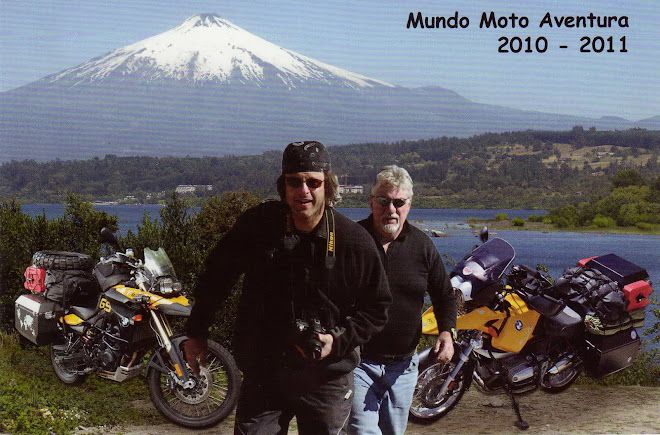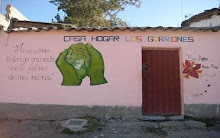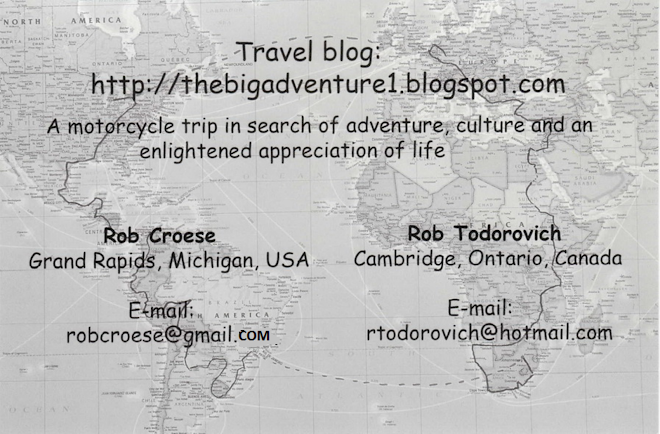I came to know about the orphanage through some old colleagues/friends who used to live an work in Ayacucho. During the 80's and the first couple of years of the 90's the Ayacucho area suffered greatly under the terrorist activities of the Maoist Shining Path movement and the counter attacks by the Peruvian military. During that time many children were orphaned and maimed and left to the mercies of such institutions as Los Gorriones.
Los Gorriones is a private institution that currently houses 29 children of all ages, 14 of them physically and/or mentally handicapped and the other 15 are vivacious children who go to school and do their chores in the home. The orphanage is founded and run by a Belgian gentleman, Gil Van den Bergh, who with his French wife, Chantal (who sadly died of cancer a couple of years ago) personally adopted a severely handicapped girl, Ruth Karina.
The orphanage is presently functioning in rented quarters, which are cramped and very rustic, to say the least. It operates with a number of employees, as the handicapped children require round-the-clock attention by personal caretakers and the other children are taken care of by volunteers who come from Europe and North America for a minimum of two months and as long as a year for the sake of continuity.
The orphanage has been able to purchase an ample piece of land near the current facility and they are hoping to build a more adequate facility on that land to care more properly for the children. The architectural design for the property will take place in March of next year by EMI (Engineering Ministries International). EMI will come down to Ayacucho with a group of architects, engineers and social workers to design the project. They will be investing USD 80,000 in their efforts and are asking the orphanage to come up with ten percent of that, or USD 8,000.
And that is where we come in. We would like to present this project to you as our charity and you can send your tax-deductible donations of any amount via the following web sites, designating them for the Los Gorriones Construction Project:
For donations from the US:
Canadian site for donations:
For donations from Europe, please refer to the Los Gorriones web site posted on the right side of our blog. If you have any questions you can e-mail either one of the Robs and we can refer you to other people who are more familiar with the donations side of things than we are. In any case, if you feel inclined to donate to this worthy cause, the children, the orphanage leaders and benefactors, and we really appreciate it.
Here are some pictures from our visit to the orphanage taken by RobT:
The street on which Los Gorriones is located.
We drove our bikes up the hill on some precarious roads.
To the right of the door it says, "Sin Amor, nada soy," (Without love I am nothing).
Several of the 29 kids that call this place home..
Firewood for cooking.
Children's playground.
The children are responsible for washing their own dishes after they eat.
The kitchen.
"Dental hygiene station" where the children keep their toothbrushes.
Each child has a chore. This girl is cleaning the lunch table.
None of these kids are told what to do, they just do it. Incredible.
Sink where the dish washing and general hygiene takes place.
One orphan helping a special needs orphan. They are one big family.
Gil, the founder, explaining to RobT and Walt Wood (a local missionary and benefactor of the orphanage along with his wife Mary Lynne) how the orphanage is run, what the goals are and his vision for the future. Incredible story! Incredible effort!
RobT: After visiting the orphanage, Walt Wood took us to the Remembrance Museum, which is dedicated to the remembrance of the atrocities committed by the Shining Path Terrorists and the Peruvian Army during the period from 1980 to 1992. Walt calls the museum the Holocaust Museum of Ayacucho.
The museum, which used to house orphans and surviving spouses of people killed by the terrorists or the army, is profusely decorated with murals painted by survivors of the mass killings.
A three-sided monument located in the park outside the museum. Each side depicts the different stages of the atrocity. This first side depicts a people caught between the Shining Path guerrillas (machete and hammer and sickle on the right) and the Army (gun on the left) and the horror that was brought upon the people by both forces.
The second side depicts the scales of justice and a book signifying the Truth Commission trying to uncover what happened and where the bodies are buried.
The third side depicts the end to the conflict and a new beginning for the people. You can see the flower growing out of the gun.
In the corner on the museum grounds there are stones painted white with the names and dates of some of the people that were murdered. This area is a sanctuary to the survivors and to those that lost loved ones.
One of the pieces of art in the museum that was created by a survivor who had lost his family. The scene depicts how he remembered that day.
A school girl saying goodbye to a fellow classmate. The deceased is lying on the table behind the candles.
campesinos ended up killing many of those for whom the philosophy was created. The Shining Path ended with capture of the brain behind the movement, Abimael Guzman.
On a more pleasant note, we had a good look at the exquisite colonial city of Ayacucho. This city started as an outlying enclave of the Spanish, with its many churches, monasteries, schools, markets and ornate private housing with typical inner patios. Much of the old city is still preserved and walking on its cobble stone streets takes one back to the 17th Century.
One of the markets within the stone walls of Ayacucho.
Typical colonial side street.
Entrance to one of the markets.
Typical "convenience store."
Ayacucho is an amazing example of a colonial city with all the narrow side streets, arches, stone structures, and thick, huge wooden doors and balconies.





































No comments:
Post a Comment